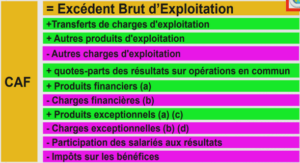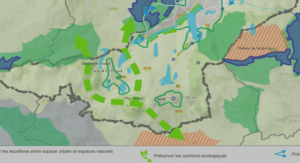Environmental Conditions in Quebec
The road system is a great asset in Canada and Quebec. The infrastructure plan investment for Quebec has been released for the period of 10 years starting from 2017 to 2027. It reports that more than 19 percent of the investments are for the road itself. On the other hand, more than 80 percent of pavements in Quebec are the flexible type which asphalt is the most expensive layer and plays an important role in its performance.
Flexible pavements in Quebec experience severe seasonal climatic conditions in a year (Doré, & Zubeck, 2009). Freeze-thaw cycles and frost action is a major cause of pavement deterioration in Quebec. The extreme variations in temperatures have significant influences on the performance of pavements (Carter, & Paradis, 2010). Previous research demonstrated that the variations of temperature can create tensile stress at the bottom of the asphalt base layer even more than traffic loads. On the other hand, Québec roads are subjected to seasonal ambient temperature variations of 60°C and daily rapid variations of temperature that may run as high as 30°C. These significant temperature variations in combination with the moisture inside the pores, traffic loads, and loss of bearing capacity due to saturated underlying granular layers during spring period can result in the development of premature deterioration of fatigue cracking.
Analysis of the daily variation of temperatures and its effect on the performance of asphalt pavements in Quebec needs to be examined at a more precise assessment. a road in the southern part of Québec, from November 1, 2014, to May 1, 2015. It shows that the spring period which is started from November to May has a high probability of freeze-thaw cycles. A freeze-thaw cycle is considered when the temperature falls below 0ºC or -1ºC and returns above 0ºC or even 1ºC.
Effect of Freeze-thaw Cycles on Asphalt Mixtures
Freeze-thaw cycles can create damage which is related to temperature and moisture susceptibility that is significantly affected the performance and durability of flexible pavements in cold regions (Goh, &You 2012). Freeze-thaw damage on asphalt mix is a major cause of degradation in cold regions. The penetration of water in the pores of asphalt mixes combined with the high variation of temperatures decrease the adhesive bond between the mastic and the aggregate (Ozgan and Serin, 2013; Tang et al., 2013).
The degradation process of an asphalt mix in terms of freeze-thaw cycles are categorized as decreased in strength, performance loss, and adhesion loss between the aggregate and binder. With the increase of freeze-thaw cycles, the splitting strength of mixtures decreased and the volume expanded gradually. The performance stabilized until the next rapid deterioration caused by the loss of interfacial adhesion between the asphalt and aggregate. Feng et al. (2009) indicated the importance of gradation on the performance and durability of asphalt mixes in cold regions. They concluded that the low percentage of voids had the best freeze thaw performance. They also showed that the freeze-thaw repetitions influence more when the percentage of salt is less than 3%. Mauduit et al., (2010) is observed that the specimens had different swelling at the beginning of the freezing periods. This can be deteriorated asphalt pavements as a result of differential horizontal strains appearing within the structure layers, due to different swelling conditions depending on their moisture content. Another study by Goh and You (2012) conducted the rapid freeze-thaw cycles to assess the potential of the stripping and adhesion loss of asphalt mixes with utilizing an image processing technique. 300 rapid freeze-thaw cycles can represent the daily repetition of freeze-thaw cycles during one year in cold regions area. The image of the surface of the mixes was captured and assessed and the results found that the stripping increases along with a number of freeze-thaw repetitions. Özgan & Serin, 2013 evaluated the freeze-thaw strength of asphalt mixes. The experimental results from the specimens that were subjected to different freeze-thaw cycles (6, 12, 18, and 24 days) showed the Marshall stability decreased substantially after 6 days of freeze-thaw cycles and gradually gentle for the 12, 18 and 24 days of freeze-thaw cycles. Si, Ma, Wang, Li, & Hu, (2013) analyzed the effect of freeze-thaw cycles by using uniaxial compressive test for an asphalt mix. Results indicated that the resilient modulus and compressive strength decreased with raising in the number of freeze-thaw repetitions. The performance decreased substantially at a first number of freeze-thaw cycles. They also reported that a higher binderaggregate ratio results in a small reduction in compressive performance under repeated freezethaw cycles. El-Hakim & Tighe, 2014 statistically evaluated the mechanistic properties of asphalt mixes subjected to freeze-thaw cycles. The dynamic modulus results indicated a major change in the norm of complex modulus especially at 4 °C and -10 °C. Results also demonstrated the benefit of additional binder content to the mix.
Previous research by Doré & Savard (1998) reported that 90 percent of fatigue damage occurs during spring thaw which is due to the effect of environment and traffic loads. During the thawing period, the melting of snow inducing an important bearing capacity loss. The loss of structural support from underlying layers creates a significant increase in tensile stresses at the bottom of the asphalt layers. In addition, there is another possibility of increased tensile stresses due to temperature variations and water expansion/ contraction which causes an increase in early fatigue cracking. This highlights a significant gap between actual loading conditions in the field and conditions considered during design. Based on these results, it appears that the action of traffic alone is not the cause of failure of bituminous asphalts in winter. Instead, it is probably the effect of thermal stress, thermal cycles, and moisture penetration which results in stress that exceeds the tensile strength of the asphalt materials (Carter & Paradis, 2010).
INTRODUCTION |






